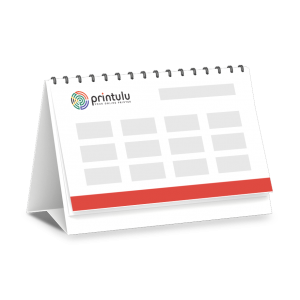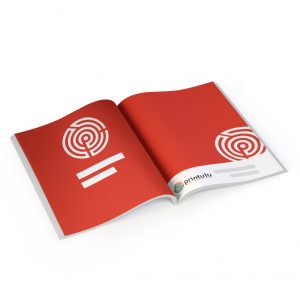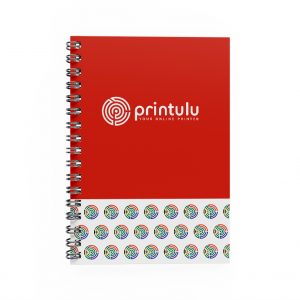You have done the difficult work of briefing and finalising a brilliant design and you are using the right printing partner to get your materials ready. However, the work is not yet done. You still have to get your materials into the right hands.
Distribution is a time-consuming process if you want to get it right. It can also be expensive, so you have to make the cost worthwhile. In this post, we list and detail various methods and considerations for effective and targeted distribution that will maximise the results of your promotional materials.
Define who must see your materials
Start by defining who you want to see your materials. You have likely done the bulk of this work when creating your design and message, here are a few details to consider for distribution. The specific categories to look for are:
Geography
This is the physical location where your materials will be handed out or mailed to. This is the area where your audience lives, works or plays. Choose areas where most of your customers are from to reach people similar to them who will benefit from your offering. You may also find there are areas where you don’t have any customers at all, consider testing distribution in these areas to determine to if this presents an opportunity for new customers.
Tip: If you are handing out flyers or pamphlets, then consider high traffic areas where people are waiting in queues.
Demographics
As a young adult, I am tired of getting flyers for retirement homes. So, remember to mention any common characteristics that your distributors should look out for. This ensures your materials are given to the relevant person.
Psychographics
Common interests, values, attitudes and personality traits that your audience shares determine potential areas where you can hand out your materials. Are they art enthusiasts? Try artisanal markets. Music lovers? Try the long lines to enter clubs or festivals.

Who, where and what are they doing?
Behavioural
This one is all about context. What behaviours will indicate someone that is most likely to respond to your message? Are they going to lunch, are they heading into or coming out of the gym. Are they a university student during exam time? A professional during bonus season? Or a mother to be?
Combining all these factors will lead you to the right audience at the right time and therefore drive more significant engagement.
At this point, you should have enough insight to determine the most effective distribution method.
Using your store
Make sure your internal high-traffic areas are well and tastefully stocked with your promotional materials. This could be annual reports for corporate offices, brochures for your showroom and flyers for your retail store. Remember to pair these with your posters, banners and counter stands. Possible areas are:
- Retail stores and showrooms – checkout counters, display cabinets, exits and entrances.
- Offices – meeting rooms, foyers, waiting rooms and reception desks.
[Related: Counter Stands – How to maximise your point-of-sale advertising]
At your events
Your hosted or sponsored events, expos and conferences are great places for reaching a relevant audience. Use them to hand out your material to or to leave it in a visible area.
[Related: Get print-ready for your next expo, trade show or community event]
Using feet on the ground
Feet on the ground is great for local distribution. You have a number of people you can ask to hand your material, namely your colleagues, friends, family or volunteers from your social club or organisation.
You can also find local university students who are always willing to take an odd job for extra pocket money. Check with the administration office or student representative council for permission to place an ad on the notice board, or to get the word out. You can also place an ad in the student newspaper or find them via social media.
It is wise to train the people who will be handing out your material. Provide them with a brief sales-pitch, who they should hand your material to and answers to frequently asked questions. This converts them into sales representatives and not just people that hand out your flyers. Including special outfits that represent your brand may increase engagement and recall. If you don’t have any special outfits, then opt for comfortable clothing that makes you and the reps approachable and friendly.
[Related: A printer’s tips on flyer design, printing, and distribution]

Inserts in newspapers
Using inserts in local newspapers
You can also use your geographic data to find local newspapers that will include your flyers or pamphlets as inserts to distribute to their readers. Some services may charge a flat cost per thousand inserts, including printing, and some may require that you provide the materials. (We can print and deliver to the newspaper’s offices, just let us know the shipping address.)
Local newspapers are effective as they have loyal readers and are trusted to provide useful information. Therefore your promotional or informative materials may receive enhanced credibility by being placed in these publications.
Focus on publications that are delivered door to door. You should also target publications that are relevant to your product/service if they exist or are distributed to your target area, as these have a better chance of reaching the right person.
Similar advertisers may advertise in the same publication, factor this into your design and message.
Using Local businesses, restaurants and coffee shops
Local businesses to target are restaurants and takeouts, hairdressers, convenience stores, laundromats, cafes, doctors’ offices, gyms and so on. Negotiate with these businesses to leave your materials somewhere where people will take them, or ask them to hand them out to their customers.
You can negotiate a fixed price per thousand items, you can subsidise their packaging costs to get distribution via their deliveries or promote their business in return. If you’re a B2B company, then consider offering your service to them as payment.
Remember, complementary businesses likely speak to the same audience you are trying to reach.

Door to door
Door to door delivery
This can be via feet on the ground and involves placing your materials into mailboxes at the homes of your target audience.
Bear in mind that these can be easy crumpled up under other letters or packages in the box, therefore it may be worthwhile to print your materials printed on thicker paper, with lamination, to minimise distortion.
Other door-to-door methods are:
Direct Mail Marketing
Direct mail is more targeted as you know exactly who you are sending the mail to and can better customise your message. Details you should have when sending direct mail is names, contact details and address. These details also enable you to personalise your design with the right name and relevant offering.
This is usually targeted at an existing customer base or through a company that has a mailing database.
Delivery packages
Part of door to door could be pairing your materials with deliveries to your customers. This is a great way to upsell or cross-sell to your existing customers and can also form part of a retention/referral campaign.
Hiring a distribution company
A quick google search can help you find promotion, activation or direct mail companies. To find the right company, use the following checklist:
- Check their website and take note of how the professionalism, current clients and testimonials, pricing and how long they have been around for.
- What is the minimum or maximum quantity that they are willing to handle for you?
- Do they check on their staff to ensure they’re doing what is required?
- Check social media to see what they share and what their clients are saying about them.
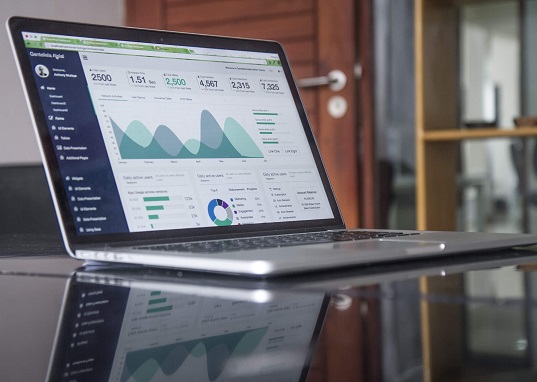
Track and measure
Tracking and measuring
You can measure the success of your distribution using a few methods:
- Use discount codes to track how many people make a purchase after receiving your materials.
- Include a unique webpage or landing page that can only be reached via a URL or QR code.
- Ask customers where they heard about you when they inquire or make a purchase.
- Monitor your communication channels – website, email, telephone – to see if there was an increase in enquiries during the campaign.
- Review your sales volumes before, during and after your campaign.
You need to monitor the impact of your distribution to see what is working and to change or improve what isn’t. Changes can be a new design, format/size, distribution location, and other distribution methods.
[Related: Integrating print and online marketing – tools, tips and tactics]
Repurposing on digital channels
You can also repurpose your designs for use on your website, in an email campaign, on your social media and as web banners. This is a great way to maximise ROI from your design costs as it allows you to extend your reach and, if targeted properly, retarget the same people who see your other promotional material.
Other tips:
Keep your design and message simple and effective
Each method will include noise from direct or indirect competitors. Ensure your design is engaging but simple enough to be understood and retained in 15 seconds or less. Focus your message on how your offering this benefits your customer and not too much on your company itself.
Premium material
Consider full colour, lamination and a premium glossy paper to stand out from the rest. Low-quality paper, a poor design and a bad finish can diminish your credibility.
A manageable size for your target audience
You don’t want people to discard your materials immediately after taking them. Consider their context and how you can make it easier for them to store your material for later viewing. Adding a discount code or a competition increases the chance that they keep your material and give it the desired attention.
Check the legalities and get the right permissions
Just because the place is open to the public, does not mean that it is open to handing out flyers and other promotional materials. Find the office number for these places and speak to the facilities manager to find out what permissions you require to hand out your materials.
Good advice for minimising penalties and reputation damage is to leave as soon as you are instructed to by a relevant authority. Dispute this through the right channels later, not in public.
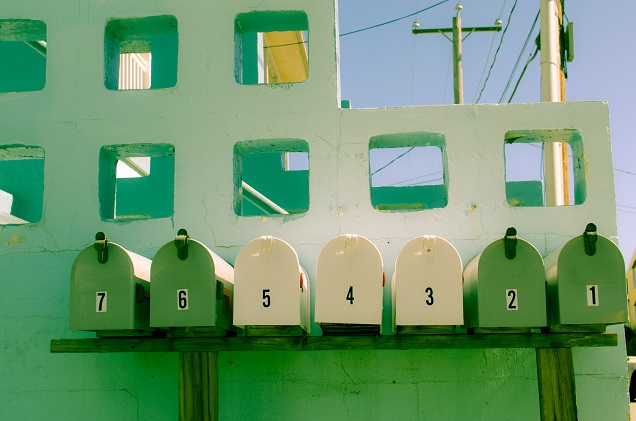
Keep it neat
Clean up after yourself
Don’t be associated with litter. Spend an hour after the traffic has died down to clean the area of your materials.
Test your contact information
Ensure that your web address, vanity URL, QR code, phone number, email address and physical location are correct, work and are constantly monitored. Tes these details before sending to print.
Repeat the campaign after sometime
Targeting the same area and people, after 30 days or so, with a slightly modified design may remind people of your offer. This is particularly effective for reaching people who intended on taking advantage of your offer but couldn’t when they first saw your promotion.
Conclusion
You have a number of options and considerations for strategic distribution. When properly planned and executed it helps you to reach people who are more likely to be engaged with your materials.
First, you need to define your target market so you can figure out how best to reach your audience.
Your methods for distributing your materials are:
- Place them in your shop or office.
- Hand them out at events, expos and conferences.
- Use trained people to hand them out.
- Insert them into local newspapers.
- Display them at local businesses.
- Deliver them door to door.
- Hire a distribution company to handle the entire process for you.
Don’t forget to track and measure the impact so you can improve your ROI. Also, leverage your design costs by repurposing your design for use online.
Lastly, get a great design, receive the necessary approvals and clean up after yourself.
Resources:
- 3 Great Ways to Distribute Your Flyers
- The Best Ways To Distribute Your Flyers And Leaflets
- 7 Ways to Increase Sales with Flyer Distribution
- Flyering 101: How to nail flyer distribution
- The Secret to Effective Flyer Distribution
- 5 Proven Ways to Distribute Brochures and Flyers
- 5 Ways to Reach More People With Your Event Flyers
- How to Distribute Leaflets Effectively
Related:
- Counter Stands – How to maximise your point-of-sale advertising
- Get print-ready for your next expo, trade show or community event
- A printer’s tips on flyer design, printing, and distribution
- Integrating print and online marketing – tools, tips and tactics



